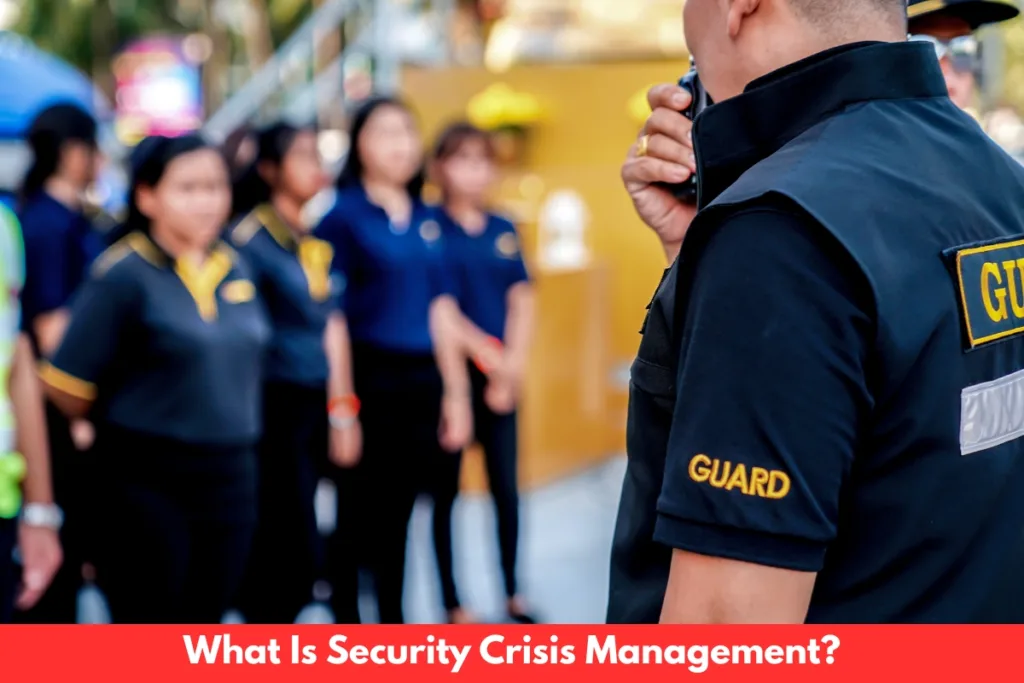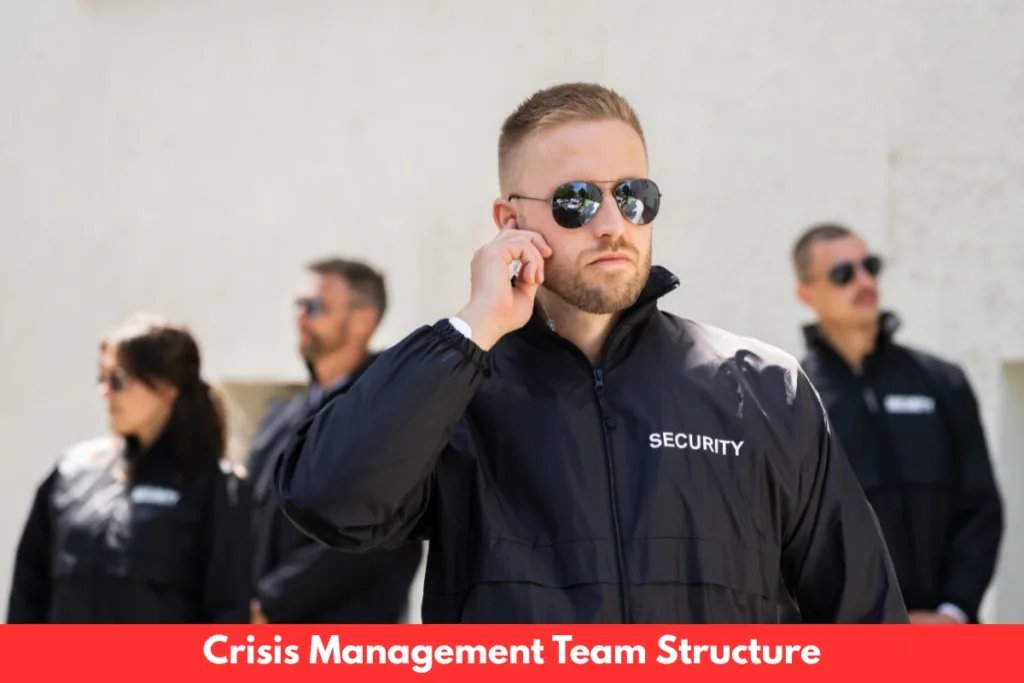So your company just got a threatening email about a disgruntled former employee. Or maybe you’ve noticed the same car parked outside your home three days in a row. Or perhaps there’s breaking news about civil unrest in a city where your executive team is currently traveling. What happens next could make all the difference between a quick resolution and a full-blown disaster.
That’s why security crisis management isn’t some theoretical business school concept – it’s practical protection when things go sideways in the real world. Truth is, most people and organizations are completely unprepared for security emergencies. They freeze, panic, or make decisions that accidentally make things worse. But it doesn’t have to be that way.
Let’s talk about how to handle security crises like a pro, even if you’re hoping you’ll never need this information.
What Is Security Crisis Management?

Security crisis management is basically having a game plan for when security threats pop up. It’s the whole system of preparing for, responding to, and recovering from incidents that threaten people, places, or operations.
Unlike regular business crises (think PR disasters or financial problems), security crises involve immediate physical dangers that need split-second decisions. We’re talking about active threats, workplace violence, kidnapping attempts, home invasions, or targeted attacks against executives or facilities. The goal isn’t just handling the immediate threat – it’s also about minimizing damage, protecting lives, and getting back to normal operations as quickly as possible.
Kind of like what we discuss in our crisis management planning guide, but specifically focused on security incidents where minutes or seconds matter.
What Is the Purpose of Crisis Management?
Crisis management serves several critical purposes beyond just “dealing with bad stuff.”
Here’s what it’s actually designed to accomplish:
Primary Purposes of Security Crisis Management
Purpose | Description | Why It Matters |
Life Protection | Keeping people safe from immediate threats | Human safety always comes first |
Damage Control | Minimizing physical and financial harm | Reduces recovery time and costs |
Continuity | Maintaining essential operations | Prevents total organizational shutdown |
Legal Protection | Documenting proper response procedures | Reduces liability and ensures compliance |
Reputation Management | Demonstrating responsible handling of incidents | Preserves stakeholder confidence |
Structured Decision-Making | Providing frameworks for high-pressure situations | Prevents panic and improves outcomes |
For executives and high-net-worth individuals, crisis response focuses specifically on neutralizing threats, coordinating with authorities, protecting family members, securing properties, and managing sensitive information during and after incidents.
Types of Security Crises Requiring Professional Management
Not all security incidents are created equal. Different threats require different responses. Here are the main types of security crises that typically need professional management:
- Active threats against persons – Direct threats of violence against executives or family members
- Facility breaches – Unauthorized access to offices, homes, or secure locations
- Workplace violence – Attacks or threats in business environments
- Kidnapping and extortion – Abduction attempts or ransom demands
- Stalking escalations – When concerning behavior progresses to an immediate threat
- Civil unrest – When protests or disorder threaten personnel or facilities
- Travel emergencies – Security incidents affecting executives in transit or abroad
- Cyber-physical attacks – When digital breaches create physical security implications
What makes these situations particularly challenging is how quickly they evolve. A threatening email can escalate to physical surveillance within days. Civil unrest can transform peaceful streets into danger zones in hours. And active threats unfold in minutes or seconds.
Essential Components of Security Crisis Management
Effective crisis planning isn’t just about having a binder on a shelf labeled “Emergency Plan.” It’s about creating a comprehensive framework that works when every second counts.
Here are the critical elements:
Crisis Prevention and Threat Assessment
The best crisis is the one that never happens because you spotted the warning signs early. Professional threat assessment involves systematically identifying potential risks before they materialize:
- Monitoring concerning communications or behaviors
- Evaluating vulnerabilities in physical locations and travel routes
- Gathering intelligence about potential threats
- Implementing preventive security measures
- Creating early warning systems
This is where the TSCM (Technical Surveillance Counter-Measures) services we discussed previously become vital – they help identify surveillance threats before they lead to security incidents. Many security crises show warning signs days or weeks before they happen, giving you time to intervene if you know what to look for.
Crisis Management Team Structure

When crises hit, having clearly defined roles prevents confusion and duplication of effort. An effective crisis team typically includes:
Key Crisis Management Team Roles
- Crisis Director – Maintains overall command and makes final decisions
- Security Lead – Coordinates protection operations and law enforcement liaison
- Communications Coordinator – Manages internal/external messaging and information flow
- Legal Advisor – Addresses compliance issues and documentation
- Medical Response Coordinator – Handles injuries or health emergencies
- Family Liaison – For executives, someone specifically focused on family protection
For high-net-worth individuals and executives, pre-identifying who fills these roles is crucial. This might include a mix of internal personnel and external security professionals like those described in our personal bodyguard guide.
Crisis Response Protocols and Procedures
When an incident occurs, there’s no time to figure things out from scratch. Response protocols provide the structure for immediate action:
- Immediate threat neutralization – Steps to protect life and safety
- Communication cascades – Who gets notified, in what order, using what methods
- Evacuation or lockdown – Decision matrices for whether to move or shelter
- Law enforcement coordination – Protocols for engaging authorities
- Family protection – Procedures for safeguarding family members
- Documentation – Methods for capturing critical incident details
These protocols must be simple enough to execute under extreme stress. Complex 30-step procedures will fail during real crises because stress impairs cognitive function.
The best protocols are rehearsed repeatedly so they become almost automatic. For executives who travel frequently, these protocols must be portable and adaptable to different environments – something our maritime security operations focus on for vessel-based security scenarios.
Coordination With Law Enforcement and Emergency Services
During serious security incidents, private security and public safety agencies must work together seamlessly. This coordination doesn’t happen by accident – it requires:
- Pre-established relationships with local law enforcement
- Clear understanding of jurisdictional boundaries
- Protocols for information sharing during incidents
- Procedures for facilitating emergency access to secure locations
- Plans for the handoff of incident management when authorities arrive
According to the Department of Homeland Security, public-private security partnerships are critical for effective crisis response. Professional security teams establish these relationships before incidents occur, making coordination smoother when emergencies happen.
Security Crisis Management Planning
Having a documented plan isn’t optional – it’s essential. Comprehensive crisis planning includes:
Essential Elements of Security Crisis Plans
- Threat-specific procedures for different scenarios
- Contact directories with 24/7 information for all key personnel
- Facility information, including floor plans, access points, and safe rooms
- Communication systems, including backup methods when primary channels fail
- Resource inventories listing available emergency equipment
- Decision authorities clearly stating who can make what decisions
- Recovery procedures for post-incident operations
The ASIS International security standards recommend reviewing and updating crisis plans at least annually and after any significant organizational changes or security incidents. Plans sitting untouched for years become dangerous liabilities because they contain outdated information and procedures.
Training and Crisis Preparedness Exercises
Plans mean nothing without practice. Crisis exercises build the muscle memory needed to execute under pressure:
- Tabletop exercises – Discussion-based walkthroughs of scenarios
- Functional drills – Testing specific components like evacuation or communication
- Full-scale exercises – Comprehensive simulations of entire crisis scenarios
Post-Crisis Recovery and Analysis
The work isn’t done when the immediate threat ends. The recovery phase includes:
- Immediate security reassessment to prevent follow-up attacks
- Trauma support for affected individuals
- Comprehensive documentation for legal and insurance purposes
- Security enhancements addressing identified vulnerabilities
- After-action reviews to improve future response
For executives and high-net-worth individuals, the recovery phase often includes enhanced security measures, travel restrictions, and family protection protocols until threat assessments confirm the situation has fully stabilized.
Frequently Asked Questions
What is the difference between crisis management and emergency management?
Crisis management addresses specific, unexpected incidents that threaten safety or operations, while emergency management typically involves broader disaster response and public safety coordination. Crisis management is more focused on individual organizations or persons, while emergency management usually involves governmental response to wider disasters.
Who should be on a security crisis management team?
A core team typically includes security leadership, legal counsel, communications specialists, HR representatives, and executive decision-makers. For personal security, the team should include family protection coordinators, executive protection specialists, and residential security managers.
How often should crisis management plans be updated?
Security crisis plans should be reviewed quarterly, updated annually at a minimum, and immediately revised after significant organizational changes, leadership transitions, or security incidents.
What are the biggest mistakes in security crisis management?
The most common mistakes include: failing to identify threats early, not having clear decision authority during crises, inadequate communication systems, lack of coordination with law enforcement, insufficient training and exercises, and neglecting psychological support after incidents.
Final Thoughts
Effective security crisis management ultimately protects what can’t be replaced – human lives, organizational viability, and peace of mind. The time to prepare isn’t during a crisis, but long before it happens. For executives, high-net-worth individuals, and organizations facing elevated threat profiles, professional crisis management capabilities aren’t optional extras – they’re essential protective measures in an increasingly unpredictable world.
Contact HK Defense Solutions for a confidential consultation about developing or enhancing your security crisis management capabilities.
